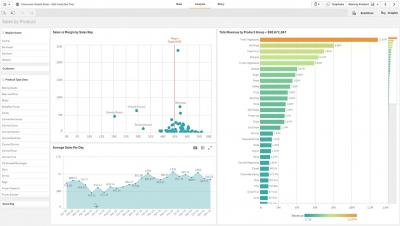Analytics
Is analytics going back to the future?
The Connected Car powered by Cloudera
How to Deploy Yellowfin Signals on Google Analytics Data
In the previous blog, we initially discussed how Yellowfin Signals discovered a surprising website traffic spike hidden in our Google Analytics data. So how did we set up Signals? And did we learn anything along the way? Read on below for our learnings and suggested best practice (this is going to be a deep dive, so grab a coffee and enjoy!)
Deploying Yellowfin Signals on Google Analytics data
Make Google Analytics data meaningful with Yellowfin Signals
Lots of organizations use Google Analytics and Google Insights to monitor the effectiveness of their digital marketing. While it looks appealing, some of the information it delivers is almost meaningless. It’s so complicated that it doesn’t help you understand what’s happening in your business.
The Impact of AI on the Data Analyst
The introduction of AI, automation and data storytelling to the world of analytics has not only had an immediate impact on the end users of analytics but also the people that work in the field. While many analysts may fear they will be replaced by automation and AI, CEO of Yellowfin, Glen Rabie, believes that the role of the data analyst will increase in significance to the business and breadth of skills required.
Why data not anecdotes matter - election spin versus cold hard reality
So much of our decision making is made based on firmly held beliefs and stories we have absorbed in our lifetimes. Generally referred to as type one thinking – this is fast, emotional and generally unconscious. It is a type of thinking that is very useful for making day to day decisions like what to wear, what to have for lunch or how to get to work. However, this type of thinking is inherently flawed and full of bias.
How Signals can be used with Google Analytics
Multi-cloud & Augmented Intelligence - Setting the Stage for Qlik's Transformation to SaaS
Today at Qonnections we outlined new innovations in multi-cloud and augmented intelligence that are setting the stage for Qlik as the leading platform for SaaS-based analytics. Leveraging our unique Associative Difference and Kubernetes-based architecture, Qlik is now able to deliver the full Qlik Sense Enterprise product on Qlik Cloud Services.







